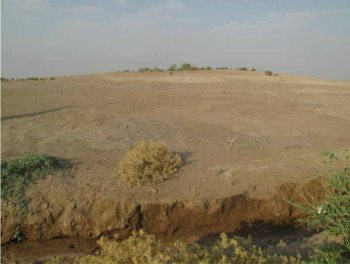
The Public Relations Office of the Research Institute of Cultural Heritage and Tourism (RICHT) quoted Head of the project Shaqayeq Hurshid as saying on Wednesday that the works include remains of a small part of a hive together with pieces of pottery representing the era, but unfortunately only parts of it had remained due to agricultural activities and irregular ploughing of the slopes of the hill.
Among the cultural works and evidence there are samples of the pottery specific to the old village dwelling up to the Uruk era as well as other cultural evidences, including stone objects, she said.
Hurshid also referred to pieces of pottery, tools and stone objects as the cultural evidences discovered on the surface of the hill.
The archeologist also referred to the surveys conducted by the American delegations in the 60s and 70s on Seyed Naeir Hill which according to Frank Howell had been determined as one of the southern areas of the Dehloran plain.
She pointed to the registration of the hill in the list of the National Monuments in 1382 (2003-2004) and said at present agricultural lands belonging to “Etka”, the Arabs living in the area, have surrounded the hill and are alternatively cultivated which has caused destruction of parts of the hill.
Hurshid went on to say that the manual digging of a big stream has caused washing off of the hill and dispersion of pottery pieces and stone objects and the removal of works and evidences indicating settlement in the area so that in some sections of the stream remains of a thermal structure and pieces of pottery are visible.
9376**2050
Follow us on Twitter @IrnaEnglish
 solhkhabar | Peace International News Agency Peace International News Agency , Peace News , International Agency News of Peace
solhkhabar | Peace International News Agency Peace International News Agency , Peace News , International Agency News of Peace